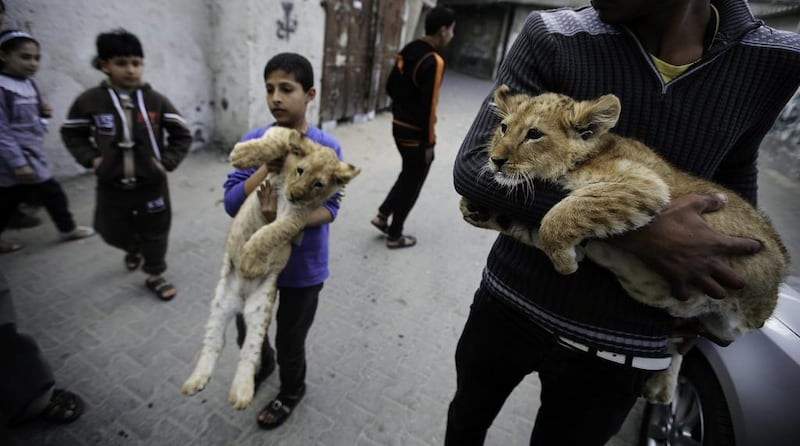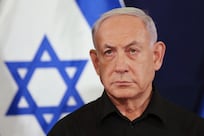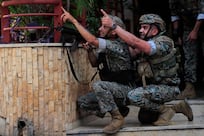In times of war, an animal mascot is often recruited to lift the morale of the troops. During the American Civil War, for instance, there was the Confederate camel “Douglas” who is memorialised at Cedar Hill Cemetery in Vicksburg, Mississippi.
With a drawing of a one humped camel carved on the memorial, it reads: “Old Douglas was the faithful patient camel of the 43rd Ms Infantry Vols. CSA Douglas was a Dromedary Camel, and was given to Col WH Moore by Lt WH Hargrove of Co. B ...”
This Arabian camel became the mascot “who at first frightened all the horses but soon became a favourite of both beasts and men”. The 43rd was even renamed “the camel regiment”.
Unfortunately, Douglas was “intentionally killed by Yankee sharpshooters” at Vicksburg and was eaten by “starving confederates”. Poor him. What an end for a celebrated four-legged hero.
There are numerous stories of animal heroics, such as the many horses used by famous figures in this part of the world that are celebrated in poetry. There is also the First World War: 10 million soldiers died, but eight million military horses also perished.
In the same war, Australians took kangaroos with them to Egypt. A photograph survives of a soldier playing with a small kangaroo with the Pyramids in the background.
Bears were a popular mascot during both global conflicts.
In the Great War, a female Canadian black bear known as Winnie (short for her hometown of Winnipeg, Manitoba) was bought by Canadian Lt Harry Colebourn in Ontario while en route to England.
Winnie gained unofficial recognition as the Fort Garry Horse regimental mascot.
Then you have Juno the Bear, a polar bear named after D-Day, June 6, 1944, when Canadian troops came ashore on Juno Beach in France. It became the official mascot of the Canadian Army.
The story I grew up with was that of a Syrian brown bear cub named Wojtek, pronounced “Voytek”, which translates to “smiling warrior”.
He became an official member of the Polish army during the Second World War and attained the rank of corporal.
He had his own serial number and could even salute like a proper soldier. Wojtek, who was found in Iran, supposedly understood Persian and Polish, and moved along with his company as they relocated to Iraq, then Syria, Palestine and Egypt. The story of how they nursed this baby bear with condensed milk placed in empty vodka bottles, is the stuff of legend.
From Sergeant Stubby the most decorated dog (a pit bull mix) of the First World War, who captured a German spy, to Gustav the pigeon who flew back to England on D-Day to deliver the first official word of the Normandy landings, and Operation Acoustic Kitty, a CIA cat recruitment programme that planned to turn felines into listening devices during the Cold War, there are many stories of animals in conflict throughout history.
But then, unfortunately, there were animals used as weapons to defuse munitions: from monkeys used in the Gulf War by the US army for landmine clearance, to dolphins and sea lions used by the US Navy, to chickens for the detection of poisonous gases and explosives attached to donkeys by terrorists.
The abuse of animals in combat zones across the world is nothing new, but it doesn’t seem to be going away.
They have no say in what happens to them — their fate is decided by humans. So for the sake of documentation, we should be revisiting these stories of the unsung four-legged and winged heroes of the past. Their stories should not be forgotten.
rghazal@thenational.ae
On Twitter:@Arabianmau





